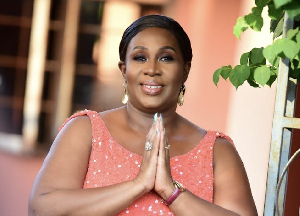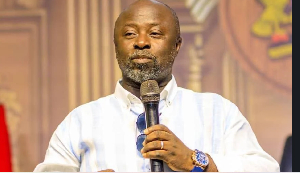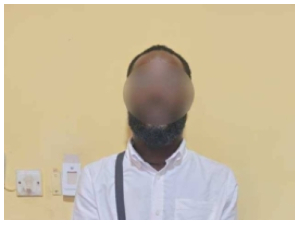Introduction
In a repeat of the tactics that brought down the Black Stars of Ghana in the semi-finals of the 2012 African Cup of Nations, the Chipolopolo of Zambia unleashed superb and rapid counter-attacking football to win 1-0 in a crucial World Cup Group D qualifier at the newly opened Levy Mwanawasa Stadium named after Zambia’s deceased third President who died in 2008.
PossessionIn the first half, Zambia was content to sit in its own half and allowed the Black Stars a lot of time on the ball. However, Ghana’s possession was unproductive as it did not result in the creation of goal-scoring opportunities neither did it cause any anxious moments in Zambia’s defence. Most of the time the ball was shuffled laterally to the left and right of the pitch, in Ghana’s own half. As the Black Stars did not really play with wingers, most of their attacks were narrow through a conjested midfield where Kwadwo Asamoah and Sulley Muntari were expected to be the channels of supply to the attacking duo of Jordan Ayew and Dominic Adiyah.
The apparent plan by Ghana’s coach, Kwesi Appiah, to try and take the game to Zambia from the first whistle was a bit of a surprising strategy. Teams playing away from home usually sit back and try to play on the break. In Ghana’s case, they were coming into this game buoyed on by a comfortable 7-0 massacre of Lesotho and were sitting on top of Group D with a comfortable goal difference. In these circumstances, even a draw would have been advantageous for Ghana but disastrous for the Champions of Africa.
The pressure and urgency of the time was with Chipolopolo who were playing at home for the first time since winning the Africa Cup of Nations. Attempting to take the game to a wounded Chipolopolo that lost 2-0 to Sudan in its first qualification game was either a mark of tactical bankruptcy by Kwesi Appiah or a combination of over-confidence and disrespect for an opponent.
Ghana’s lack of creative options in midfield
Zambia must have known that if Ghana was not allowed to play in, aorund and through the middle, then they will have been contained. The Chipolopolo did just that and dominated midfield but amazingly the Black Stars, having found it hard to use the middle, did not effectively utilise their wing areas especially in the first half. They resorted to going through the motions with no apparent Plan B.
Ghana’s midfield was populated by Derek Boateng, Emmanuel Badu-Agyemang, Sulley Muntari and Kwadwo Asamoah. The latter has often been the most creative player who tries to conjure up scraps on which the centre-forward feeds but he was at his worst and he rarely linked up play for Dominic Adiyah.
As a result, the Black Stars could not fashion any serious chances at goal for the duration of the first half. Asamoah was rightly put out of his misery in the 55th minute when he made way for Christian Atsu, who appears to be Ghana’s new revelation. Sulley Muntari’s aura was publicly outstripped at the Levy Mwanawasa Stadium as he was rendered unable to dictate the game, only appearing marginally dangerous at set pieces which he duly fluffed.
The introduction of Christian Atsu and later Richard Mpong seemed a resolve by Kwesi Appiah to attack from the wide areas and this made them a much more viable attacking entity. By the time Ghana was waking up to attack using wide positions, Zambia had decided to shut up shop by throwing in the holding player, Francis Kasonde for Felix Katongo.
Zambia’s Strategy – rapid counter-attacks and quick transitions
Zambia’s coach, Herve Renard, made two crucial changes in the left and right back defensive positions by introducing attack-minded wing backs. Chisamba Lungu was deployed on the right while Porto FC’s Emmanuel Mbola reclaimed his left back position after a lengthy absence. These wing back areas were important not only for rapid defensive cover but in launching some attacks.
In the first half, Chisamba Lungu made a lot of runs from the right before cutting in and feeding the forward line. Renard must have been aware of the potential threat of Jordan Ayew and needed a player like the versatile Chisamba Lungu to dictate proceedings and deny Jordan Ayew time on the ball.
From the start, the tempo of the game was quick especially when Zambia was on the ball. The attack play was very swift and the left wing was used to launch most of the attacks in the first half. Ghana’s right back Inkoom had a lot of work on his hands. It probably could have been Zambia’s tactic to target him as his vulnerabilities are well known.
The Chipolopolo employed a user-friendly 4-4-2 or 4-4-1-1 but one where Kalaba, Chansa, Katongo brothers, and Mayuka delightfully swapped positions as they stormed Ghana’s defence. At times Christopher Katongo seemed like a roving ambassador – popping up in so many different areas of the pitch. Whenever Ghana lost the ball in Zambia’s area, the response from Chipolopolo was swift in attack as was their transition to defensive positions when Ghana regained possession.
The Black Stars’ central defensive pairing had an average game. Boye was very good and was unlucky with the deflected ball that resulted in a goal. Isaac Vorsah, on the other hand, appeared too pedestrian. A bit of calmness by the Zambians in front of goal would have seen them convert a lot chances that fell their way.
Ghana’s attack
Ghana had Jordan Ayew and Dominic Adiyah upfront. The exertions of the two just went to show how that Ghana is a different outfit when Asamoah Gyan and Andre Ayew are in the team. Adiyah in particular was predictable and Sunzu had little difficult in reading his intentions. Jordan Ayew’s over-elaboration on the ball and the tendency to play to the gallery was a minus to Ghana. For all his busy-bee endeavours, Jordan Ayew only had one clear goal scoring opportunity.
Conclusion
Ghana was outwitted by a very determined Zambia which played quick counter-attacking football and dropped quickly to take up defensive positions. The Chipolopolo played to a system and in unison as a team. In the second half they defended admirably. It was difficult to pick out what system the Black Stars were employing except that they tried to take the game to Zambia. A coordinated team effort was not apparent in Ghana’s play. Individuals, like Jordan Ayew, were a reminder that Ghana often times tries to rely on individual brilliance at the expense of the common good. By Zambia’s victory, Group D remains wide open and any four of the teams can win it, especially Ghana, Zambia and Sudan, with all due respect to the Likuena of Lesotho. The next round of matches in March, 2013 will be highly anticipated. NAF
Gilbert Phiri
Sports Features of Monday, 11 June 2012
Source: Gilbert Phiri












